

 The South African
The South African
by Allan Sinclair
SA National Museum of Military History
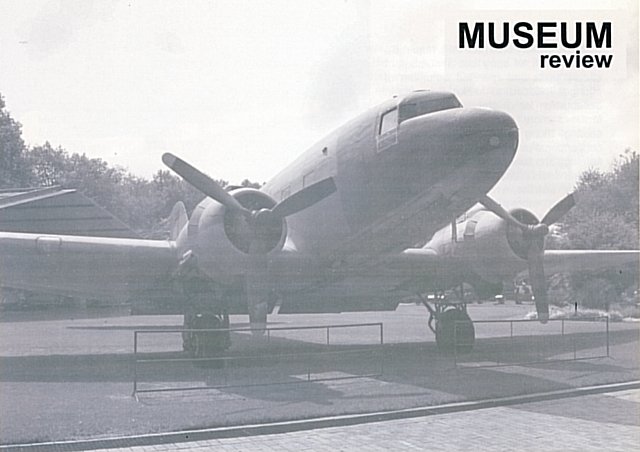
Introduction
The South African National Museum of Military History was fortunate to receive a Douglas C-47 Dakota aircraft in April 2009. This important donation was made to the Museum by Emperor's Palace where the aircraft had been on display at the Chariot's World of Entertainment Centre since June 2000. The arrival of the 'Dak', as the aircraft is affectionately known to generations of South Africans, means that, for the first time, there is an example of a cargo/supply/troop transport aircraft to enhance the variety of aviation equipment on display at the Museum.
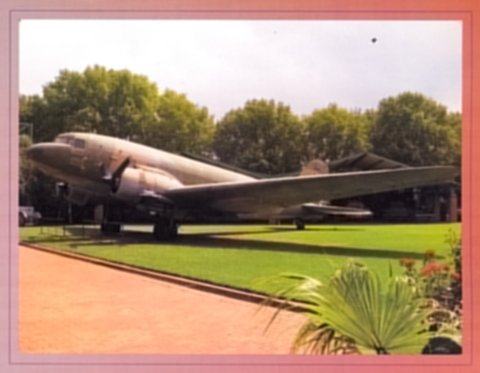
The development of the C-47 Dakota
The C-47 Dakota is one of the most famous and successfully designed aircraft in aviation history. Quite unassuming in appearance, it became a legend in its own time. No other aircraft has been able to match the love, trust and respect that the C-47 has earned in over 70 years of service at the time of writing.
The aircraft was developed as the military variant of the Douglas DC-3 passenger airliner which first flew in 1937. Recognizing its military potential, the United States Army Air Corps, later to become the United States Army Air Force (USAAF), required a utility aircraft to carry out a number of special tasks and specified a number of changes needed to make the aircraft acceptable for military use. These included more powerful engines, utility seating along the walls in place of conventional airline seats, a stronger rear fuselage and floor and the addition of large loading doors (see Douglas C-47 Skytrain/ Dakota website, www.warbirdalley.com/ c47). In all, more than fifty versions of the aircraft were constructed for the USAAF.
The introduction of the loading doors provided something of an engineering challenge. It was initially thought that the addition of such a large opening at the rear would weaken the structure of the tail section. Furthermore, the standard floor of the DC-3 was not strong enough to take the extra weight of the military hardware and supplies envisaged as cargo. These problems were eventually solved by strengthening the longerons, formers and bulkheads in the fuselage until tests proved that the structure would hold (Ingells, 1966, p 148).
In its military guise, the DC-3 first became known as the C-47 Sky train. It was also christened with a number of other names such as 'Gooney Bird', 'Sky trooper' , 'Biscuit Bomber', 'Ole Bucketseats' and 'Old Methuselah'. The name 'Dakota' became the standard designation of the Royal Air Force (RAF) and other Commonwealth air forces and was taken from the DACoTA acronym for Douglas Aircraft Corporation Transport Aircraft (Pearcy, 1982, p 24).
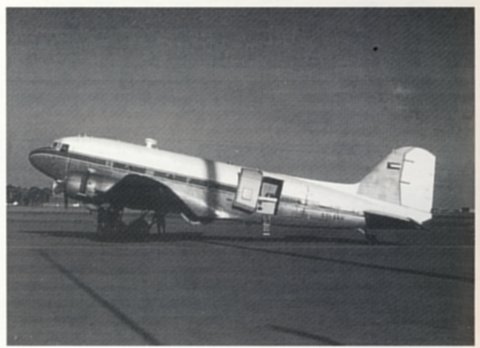
The role of the C-47 in the Second World War (1939-1945)
The C-47 was capable of transporting 10 000 lbs (4 536 kg) of cargo or 27 passengers. Without the cargo door, the aircraft could carry 28 passengers in permanent seats and this configuration was mainly used in the paratroop drop role. The aircraft's most prominent claim to fame during the Second World War was its deployment in support of most of the major Allied airborne assaults. Most of these were carried out under the umbrella of the USAAF's Troop Carrier Command and the RAF's Transport Command. The first large-scale introduction of the C-47 to combat came in July 1943 when the aircraft was used to drop 4 000 American and British paratroopers in support of Operation Husky, the Allied invasion of Sicily. Probably the most important paratrooper drop in Europe was in support of Operation Neptune, the Allied invasion of Normandy in June 1944. There, during the massive airdrops behind the beach assaults, over a thousand C-47s provided the backbone of the airlift capacity by delivering 60 000 paratroops and equipment in 60 hours.
In addition to a number of small airdrops in Italy, Greece and the Philippines, the C-47s were used for large airdrops during the invasion of southern France in August 1944 and Operation Market Garden, the assault on the bridge at Arnhem in the Netherlands in September 1944. During this operation the Dakota pilots distinguished themselves in a number of determined attempts to resupply the surrounded British paratroops while under intense enemy fire. The Allied crossing of the Rhine, code-named Operation Varsity, proved to be the largest airborne operation in history, using 1 700 transport aircraft.
Although paratrooper transport was the aircraft's largest contribution to the war effort, the C-47 performed a number of other transport tasks such as ferrying troops and cargo on routine flights, evacuating the wounded, dropping supplies to resistance groups behind enemy lines, and transporting important people. The aircraft provided sterling service in transporting cargo across the notorious 'hump' over the Himalayas between India and China after the Japanese had closed the Burma Road and cut all ground communications. During these missions, the RAF C-47s carried a total of 590 000 tonnes of supplies which were invaluable in keeping China in the war. The aircraft were required to fly to an altitude of over 25 000 ft (7 600m) over the towering peaks of the Himalayas. These flights were often undertaken in difficult weather, severe winds and freezing temperatures and the aircraft were also often the targets of attacks by Japanese aircraft (see information on the Douglas C-47 Skytrain/Dakota on the website www.warbirdalley.com/c47 and 'C-47 In Combat' on www.faqs.org/docs/air/avc47; Ingells, 1966, p 161).
By the end of the Second World War, a total of 10 692 DC-3/C-47 aircraft had been built. Under the Lend-Lease Programme, almost 2000 were delivered to the RAF. After the war, another 600 were purchased by the United Kingdom and 650 were leased. Many of these were diverted to the other air forces of the Commonwealth, including South Africa (see Douglas DC-3/C-47 Dakota on the website, www.historyofwar.org/articles/weapons_dakota). General Dwight D Eisenhower, Supreme Allied Commander in Europe, made the following statement about the C-47 at the end of the war: 'Four things contributed to the Allied victory. These were the bazooka, the Jeep, the atomic bomb and the C-47' (see Skyclass Dakota Cargo Operations on www.africanpilot.co.za/skyclass-dakota-cargo-ope rations).
The C-47 in service in South Africa
The 'Dak' has seen service for over 70 years in South Africa and for some of that time, the South African Air Force (SAAF) had the distinction of operating the largest remaining fleet of Dakotas in the world. The aircraft entered South African service in 1943 when the RAF passed a number of their fleet onto the SAAF, which, until then, had been struggling through the war with a miscellany of Junkers Ju-52s, Vickers Valentias and Lockheed Lodestars. By the end of the war, a total of 84 Lend-Lease Dakotas had been transferred to the SAAF.
Nos 28 and 44 Squadrons, SAAF, both of which had been formed atAlmaza in Egypt in June 1943 and March 1944 respectively, operated the Dakota during the war. During the last year of the war, No 28 Squadron operated from Castel Benito in Tunisia until June 1944 when it moved to Maison Blanche in Algeria. From there the aircraft flew routes covering North Africa, the Western Mediterranean, Italy and France. No 44 Squadron operated as required from Khartoum, EI Adam, Habbanayah, Athens and Bari. A regular two week schedule was opened through Habbanayah via the Persian Gulf, returning along the South Arabian route via Khartoum. Special flights and diplomatic missions were flown to the Soviet Union, St Jean, Castel Benito, Turkey, Bucharest, Belgrade, Albania, Salonika, Marseille, Forli and Zara. In addition, medical provisions were transported to forward base hospitals near the front lines.
By October 1944, both squadrons were making new records in scheduled and unscheduled flights.
The onset of winter and the deteriorating weather failed to disrupt the performance of No 28 Squadron. Earlier that month, four Dakotas were grounded by weather at Naples while six other flights had to be cancelled. Despite this, the total flying hours of that month amounted to 3 148 while the numbers of transports on strength reached 29. Further east, No 44 Squadron found compensation for the poor weather in the Mediterranean by operating in the Persian Gulf where the monsoon period had come to an end and flying conditions were excellent. A total of 1 069 hours were flown by the Squadron on routine flights.
In December 1944, No 44 Squadron moved to Bari in Italy where it operated under 249 Wing. The aircraft dropped supplies regularly to partisans in Yugoslavia while escaped Allied POWs and wounded partisans were flown out on return. Landings would often be made on specially prepared airstrips or near enemy occupied territory. By March 1945, 1 000 partisan casualties had been evacuated and, in all, over 1 200 partisans were evacuated. In the nineteen months in which No 44 Squadron served in the operational theatre, the Squadron's aircraft flew a total of 39 423 hours. At the end of the war, aircraft from both squadrons undertook the mammoth task of ferrying South African service personnel back home to the Union of South Africa (Pearcy, 1982, pp 101-2).
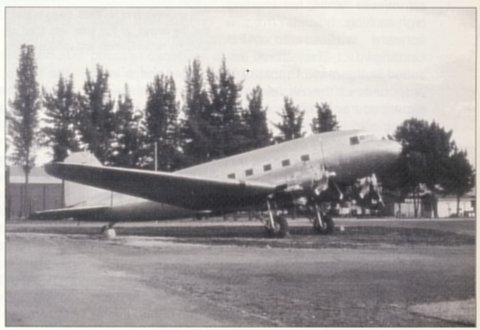
The end of the Second World War saw the SAAF dispose of many of its wartime aircraft, including a number of Dakotas, which were sold to civilian operators at very reasonable prices. Those that stayed with the SAAF continued to serve with Nos 28 and 44 Squadrons, as well as with No 60 Squadron during the early post-war period. Later, during the 1960s, Nos 25 and 27 Squadrons and the SAAF's Multi-engine Conversion Unit were also equipped with the aircraft (Potgieter & Steenkamp, 1980, pp 80, 81).
During the Border War in the 1970s and 1980s, the Dakota continued to serve as an important short-haul and supply aircraft despite its age. It could not boast being bigger, better, faster or more beautiful than any of the other, more modern, transport aircraft in the SAAF and its carrying capacity was strictly limited. However, it had very few vices and was sufficiently sturdy to handle rough conditions and it was simple to maintain. One example, No 6853, was fully equipped as an air ambulance and was used to evacuate wounded soldiers from the operational area. By the mid-1980s, Dakota Mk 3s and Mk 4s were operating with No 44 Squadron at Air Force Base (AFB) Swartkop near Pretoria, No 25 Squadron at AFB Ysterplaat near Cape Town and No 86 Advance Flying School at AFB Bloemspruit near Bloemfontein (Becker, 1995, p 130; Potgieter & Steenkamp, 1980, pp 80-1).
During one particular incident, which took place on the South West African/Namibian border on 1 May 1986, a Dakota of 44 Squadron, commanded by Capt Colin Green, SAAF, was hit by a SAM-7 surface-to-air missile while transporting high-ranking officials from a forward airfield to AFB Ondangwa. The attack resulted in the loss of most of the rudder and a large proportion of the elevators. The pilot, with every experience and skill, managed to keep the aircraft in the air and on course to Ondangwa, where it was landed safely and with no injuries to its human cargo. Vice-Admiral Dries Putter, the Chief of the South African Navy at the time, who had been one of the passengers on the flight, wrote the following in a letter to Capt Green:
'Allow me to express my belated admiration of the calm competence and professionalism displayed by yourself and your aircrew during our interesting flight on 1 May 1986. My already considerable respect for the capabilities and expertise of the SAAF has received an unexpected and unwanted boost, as has my respect for the "survivability" of the Dak. There is really not much to add except that I shall not forget those thirty minutes prior to touch down. It seemed like an eternity to me and must have demanded great concentration and fortitude on your part .. .' (Becker, 1995, pp 127-8).
The early 1990s saw a large number of Dakotas upgraded to 'Turbo-Dak' configuration under Project Felstone. This conversion somehow changed the unique radial engine character of the aircraft and brought to an end the operational service of the conventional C-47 in the SAAF. The TP version of the Dakota was then brought into service with No 35 Squadron to replace the aging Avro Shackleton in the long-range maritime reconnaissance role. At the time of writing (2009), the TP Dak continues to serve with No 35 Squadron in this capacity (see 'SAAF Museum Dakota Soldiers' on the website, www.af.mil.za/news/ 2007/083).
The Museum's Dakota No 6850
The Museum's new acquisition, No 6850, was built in the United States of America in 1944 by the Douglas Aircraft Corporation at Oklahoma City as part of Contract No AC40652. Shortly after completion, it was delivered to the United States Army Air Force with the serial number 43-49838 and painted in the standard Olive Drab/Neutral Grey of the USAAF.
On 18 January 1945 the aircraft was diverted to the Royal Air Force under the Lend-Lease Agreement as an RAF Dakota Mk IV with the serial number KN231. It was assigned to Air Command, South East Asia and delivered to India in March 1945 as part of a batch of 30 Dakota Mk IVs. There it remained in service until the end of the war, flying supplies over the 'hump' between India and China. Throughout this period, the aircraft served with Nos 31, 52 and 353 Squadrons, RAF, and, in 1949, it was still in service with No 48 Squadron, based at RAF Changi. In November 1951, the aircraft was returned to the United Kingdom and delivered to No 22 Maintenance Unit for storage and disposal.
In May 1953 the aircraft was sold to Airwork Ltd where it was converted to a Civilian Dakota Mk III and allocated the serial number G-AMZW. Two months later, Airwork Ltd sold the aircraft to Sudan Airways where it was registered as SN-AAH, later changed to ST-AAH. The aircraft remained in service with Sudan Airways until October 1965, when it was transferred to the Sudan Air Force with the serial number 424 after undergoing a thorough overhaul carried out by Scottish Aviation. This transfer did not last long; it was handed back to Sudan Airways in July 1967.
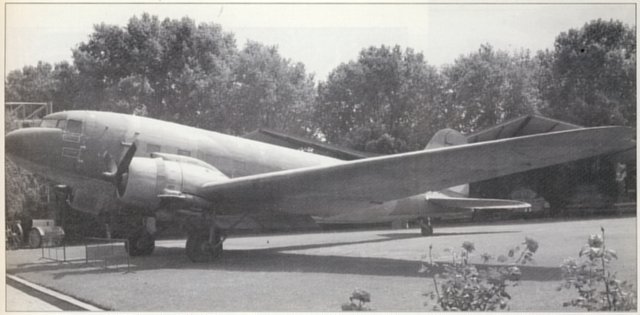
On 17 May 1975, the aircraft arrived at Jan Smuts International Airport (now OR Tambo International) in Johannesburg, still painted in its Sudan Airways livery. It is uncertain how and why the aircraft came to this country from the Sudan. Immediately after arrival, it was sent to No 1 Aircraft Servicing Unit for paint stripping, before being taken on charge by the South African Air Force in August of that year with the serial number 6850, still configured as a Civilian Mk III, but with engine numbers 10314 and 12592. The aircraft was to be the second Dakota to be allocated that particular serial number, the original 6850 having crashed at AFB Swartkop in August 1972.
In 1976, No 6850 was given a complete overhaul at the SMF Field Aircraft Services and it was later modified to SMF standards 'at Snake Valley. On 18 May 1977, it was issued to No 44 Squadron at AFB Swartkop for deployment in the photo-reconnaissance/survey role. The engine numbers allocated at that stage were 10314 and 359680.
During the early 1980s, the aircraft underwent a conversion back to Mk IV status to improve performance. At that time, Project Algebra was initiated in which it was equipped with an electronic visual reconnaissance system with an approximate range of 130 km and which included a relay capability to either a ground station or another aircraft. The photograph of the aircraft taken in May 1989 depicts it fitted with an under-fuselage sensor/tv camera offset to the left side and various extra aerials. Details of operations in this role have, unfortunately, not been made public.
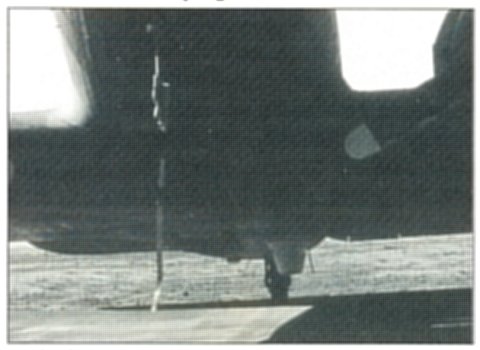
In 1990, after the introduction of Project Felstone, No 6850 was considered unsuitable for C-47 TP conversion, due to bad airframe conversion. This brought an end to the aircraft's operational service and it was grounded and placed in open storage at AFB Swartkop. In 1992, it was moved into position outside the SMF Museum hangars where it remained until June 2000, when it was transferred to Caesar's Palace, now known as Emperor's Palace (D Becker, 13 May 2009).
Conclusion
There is no review or study of military or civil aviation around the world that fails to recognize the existence of the Dakota. It is a personal tribute to the Douglas C47/DC3 that, during its golden anniversary celebrations in 1985, an above average proportion of all the aircraft built remained in service. This goes to prove that, despite many attempts by aircraft companies since the Second World War to build one, no successful replacement for the aircraft, with the possible exception of the Lockheed C-130, has been developed. In South Africa, the Dak's long and varied service made it one of the more recognized and loved piston-engine aircraft. Many are still flown by private operators and by both the South African Air Force and South African Airways museums. It is expected that, once it has been restored to its former glory, No 6850, now at the South African National Museum of Military History, will become a firm favourite with visitors.
SOURCES
Publications
Becker, D, 75 Years on Wings of Eagles: South African Military Aviation History (Colorgraphic, Durban, 1995).
Ingells, D J, The Plane that Changed the World (Aero, California, 1966).
Pearcy, A, Dakota at War (Ian Allan, Surrey, 1982).
Potgieter, H, & Steenkamp, W, Aircraft of the South African Air Force (Struik, Cape Town, 1980).
Interviews
Becker, D, 13 May 2009, at the SA National Museum of Military History.
Internet sites
www.africanpilot.co.za/skyclass-dakota-cargo-operations www.af.mil.za/news/2007/083
www.faqs.orgldocs/air/avc47
www.historyofwar.org/articles/weapons_dakota www.warbirdalley.com/c47
Return to Journal Index OR Society's Home page
South African Military History Society / scribe@samilitaryhistory.org